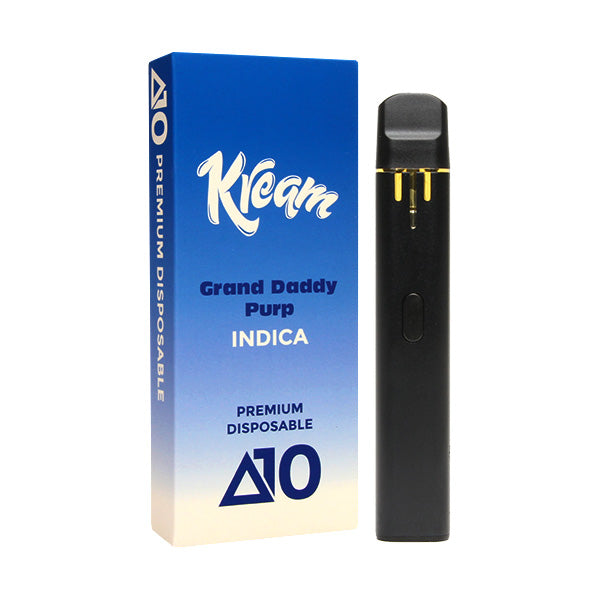Kream Disposable Vape Pods: Changing Your Vaping Routine with Costs Top Quality
Kream Disposable Vape Pods: Changing Your Vaping Routine with Costs Top Quality
Blog Article
Discovering the Environmental Impact of Non Reusable Vape Pens: What You Need to Know
In the world of disposable vape pens, a closer assessment of their environmental influence exposes a complex web of interconnected factors that necessitate our attention. From the production processes and products used to their ultimate disposal and influence on air top quality, the implications of these apparently convenient tools extend much beyond their instant usage. Comprehending the complete scope of their ecological footprint is vital for making educated decisions regarding our intake practices and the possible alternatives offered.
Production Processes and Products
Non reusable vape pens are typically manufactured using a range of materials and processes that can have considerable environmental ramifications. The primary elements of disposable vape pens include a battery, heating element, e-liquid reservoir, and a mouthpiece.
Furthermore, the manufacturing procedures included in producing non reusable vape pens can additionally intensify their ecological impact. Considering these elements, it is essential for suppliers and consumers to be mindful of the ecological repercussions associated with the manufacturing and use of non reusable vape pens.
Energy Intake in Production
Throughout the manufacturing process of disposable vape pens, the energy consumption included plays a substantial role in identifying their total environmental influence. The production of disposable vape pens requires power for different phases, including removal and handling of raw products, manufacturing components like batteries and heating components, transport, setting up, and product packaging.
To attend to the ecological ramifications of power usage in production, producers can embrace much more sustainable practices. This can include utilizing renewable power resources for producing operations, enhancing production processes to lower power waste, and applying energy-efficient modern technologies. By focusing on energy efficiency and sustainability in production, the ecological effect of disposable vape pens can be minimized, adding to a greener and more liable vaping sector.
Disposal and Waste Administration

Disposable vape pens contain parts such as batteries, digital circuits, and plastic casings that can be harmful otherwise thrown away correctly (kream disposable). The lithium-ion batteries in vape pens, as an example, present a significant threat if they end up in landfills, as they can leakage dangerous materials into the dirt and supply of water
Recycling programs specifically developed for electronic waste ought to be advertised to encourage users to recycle their disposable vape pens responsibly. By enhancing disposal techniques and waste administration strategies, the environmental effect of disposable vape pens can be significantly lowered.
Influence On Air Top Quality
The existence of disposable vape pens contributes to the destruction of air top quality in metropolitan atmospheres where their usage is prevalent. When people utilize disposable vape pens, they release unsafe materials into the air.
Additionally, the disposal of vape pen batteries, which often have hefty metals like cobalt, nickel, and lithium, can cause air pollution otherwise handled correctly. Inappropriate disposal techniques, such as incineration or landfilling, can release these poisonous metals right into the air, adding to air pollution and possibly causing injury to human health and wellness.
To minimize the impact of non reusable vape pens on air quality, promoting recognition about correct disposal methods, motivating reusing programs for vape pens and batteries, and educating individuals concerning the environmental repercussions of these tools are important actions in reducing their environmental impact.
Alternatives and Lasting Choices
Due to the ecological impact positioned by non reusable vape pens, discovering alternatives and sustainable options is essential for decreasing eco-friendly injury. One sustainable option is to change to refillable vape pens that enable customers to reenergize the tool our website with e-liquid, considerably decreasing the quantity of waste produced. These refillable pens usually have much longer lifespans, resulting in fewer gadgets ending up in garbage dumps. Furthermore, selecting vape pens made from recyclable products can additionally decrease the ecological impact. Suppliers are significantly supplying eco-friendly options, such as pens constructed from recycled metals or biodegradable plastics.
Additionally, some firms have started executing take-back programs for used vape pens, where they collect and recycle the gadgets correctly. Encouraging accountable disposal practices amongst consumers can also add to reducing the ecological impact connected with vape pens.
Verdict
In final thought, the ecological impact of non reusable vape pens is substantial, with negative impacts on air top quality, check my reference energy usage go to this website in manufacturing, and waste management. It is important for customers to consider the sustainability of their choices and choose for choices that have a lower environmental footprint. By making educated choices and supporting sustainable methods, people can add to lowering the environmental damage brought on by non reusable vape pens.

Effective disposal and reliable waste management are important facets to consider when assessing the ecological influence of disposable vape pens. By improving disposal methods and waste monitoring strategies, the environmental effect of non reusable vape pens can be dramatically reduced.
In conclusion, the environmental effect of non reusable vape pens is substantial, with adverse effects on air quality, energy consumption in production, and waste administration.
Report this page